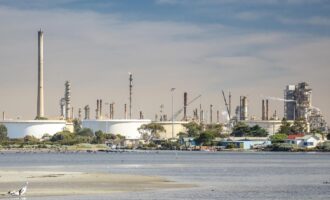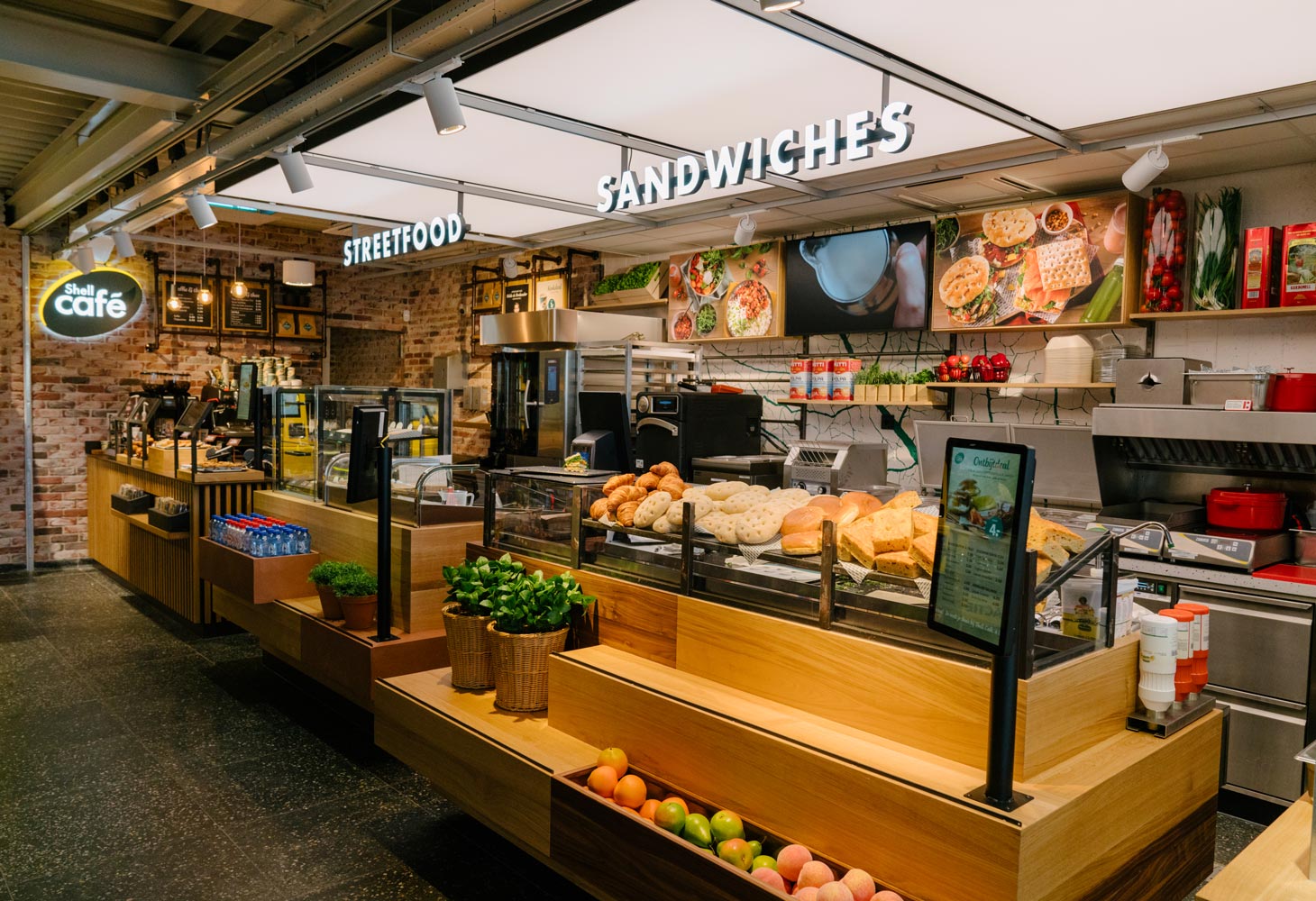
Retail service stations reshaping their future
Covid-19 was declared a Public Health Emergency of International Concern by the World Health Organisation (WHO) on January 30, 2020. The pandemic sent shock waves through global markets and triggered a historic decline in oil demand. Oil volumes rallied later in the year as countries emerged from enforced lockdowns, however levels ended the year 9 million barrels per day (Mb/d) below 2019, according to McKinsey’s Global Oil Outlook to 2040. The McKinsey report also indicated that oil capital expenditures are unlikely to ever recover fully.
McKinsey expects oil demand growth to slow in the late 2020s and peak in 2029. The report expects new production of nearly 23 million barrels per day (Mb/d) will be needed, replacing depleted production to meet demand by 2040. Similarly, the International Energy Agency’s (IEA) latest annual medium-term market report, Oil 2021, expects global oil demand to rise every year through to 2026, based on today’s policy settings. Stronger policies and behavioural changes could pull forward peak demand, they say. However, the IEA’s recently released Net-Zero by 2050 – A Roadmap for the Global Energy Sector indicates investment in new fossil fuel supply should be replaced by alternative transition fuels.
One thing is for sure, investors and the public are looking at the fossil fuel sector with increasing skepticism, and oil companies are under pressure to accelerate their energy transition. In the past, oil firms have focused much of their investments on upstream, where most of their revenue is derived. Now, businesses are shifting capital investment focus to the downstream, with diversification into petrochemicals and low-carbon businesses offering a hedge against the pressures on legacy businesses
Multinational oil and gas company Shell has pledged to become a net-zero emissions energy business by 2050. Traditional oil and gas are not going away anytime soon, and Shell has confirmed that its upstream businesses will continue to deliver vital energy supplies and generate revenues to accelerate the investment in its new energy businesses. However, in its strategy to accelerate the transition into a provider of net-zero emissions energy, released in February 2021, the oil major indicated that total carbon had peaked in 2018 at 1.7 gigatonnes per annum, and oil production peaked in 2019. Shell expects its annual oil production output to decline by 1-2% per year.
Pivoting to cleaner energy
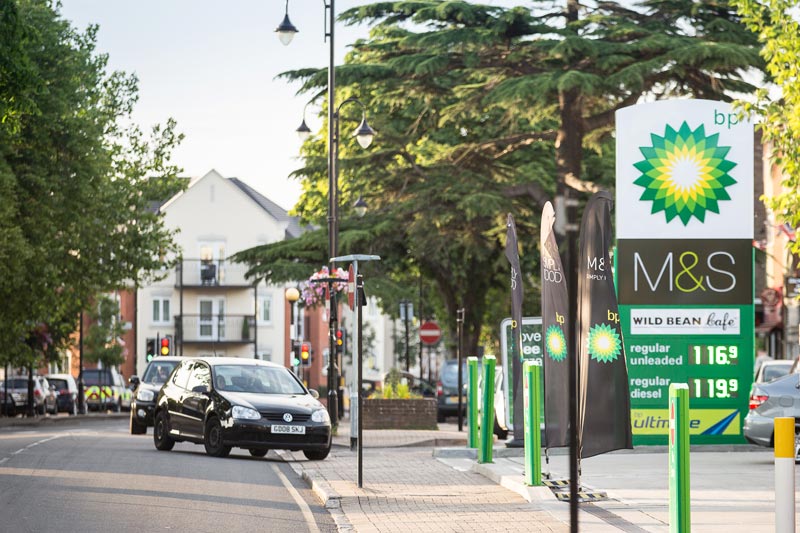
bp, which has also vowed to reshape its business to focus on a net-zero emissions future, expects a far sharper decline. In August last year, the London-based oil giant advised it would reduce oil and gas production by 40% by 2030. French energy major, TotalEnergies, has started its pivot to cleaner energy, though the company is still expecting to grow oil production in the coming years by prioritising lower-cost, shorter-cycle upstream projects.
Historically, fuel retailing has been a resilient segment of the oil and gas sector. In some ways, the Covid-19 pandemic has provided oil and gas companies a glimpse into the future — once the energy transition takes hold. McKinsey’s long-term outlook for fuel retailing predicts a decline in the global value pool from USD87 billion in 2019 to USD79 billion in 2030. The management consulting firm foresees modest growth in consumer fuel purchasing in developing markets such as Asia, Latin America, and the Middle East. Mature economies should expect gradual declines in fuel purchasing alongside the rise of electrification, shared mobility, and ongoing efficiency improvements.
Not to be deterred, many oil and gas companies have announced ambitions to grow their retail or customer-facing businesses including Shell, bp, Sinopec in China, PTT in Thailand, and Petronas in Malaysia. Global networks of filling stations can offer attractive future returns due to parallel value pools where income from non-fuel retailing can be grown.
Despite a slump in fuel sales during the pandemic, convenience shopping has proven resilient. While Shell recorded a 15% drop in fuel volumes in 2020, the company observed a 30-35% increase in basket size at the height of the pandemic. Growth in small-format retail and out-of-home consumption sees fuel retailers eyeing up a bigger share of the pie, beverage, or chocolate. During a recent survey of 10,000 Shell customers in five European countries, coffee was cited as one of the top reasons for stopping at Shell stations. For some retailers perhaps coffee could become the new oil in terms of profit focus.
Innovations in convenience retail
Shell is looking to marry its energy transition with innovations in convenience retail. The forecourt of the future will become a destination hub with more customer-centric offerings. Electric vehicle (EV) charging combines seamlessly with convenience retail. Even the fastest EV chargers still offer 10 minutes or so to grab a coffee and browse a couple of shops.
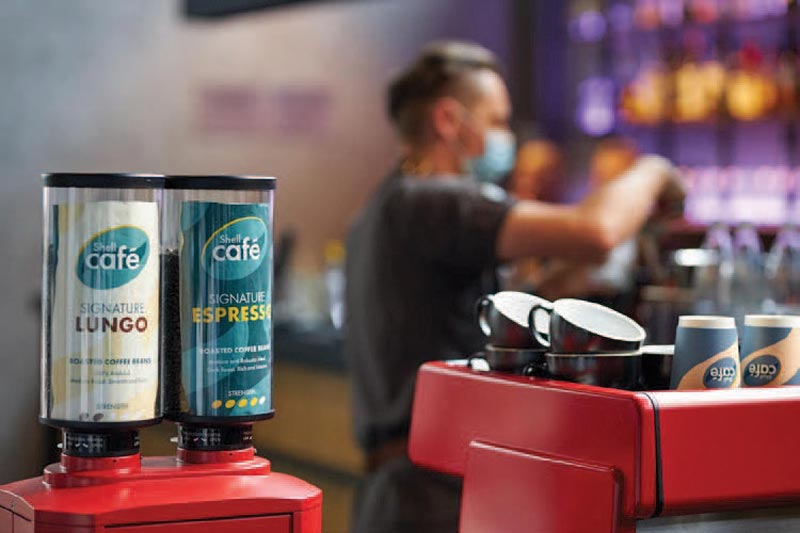
Shell has announced plans for a major expansion of its retail business to drive growth in an electric car future. Retail sites will increase from 46,000 to 55,000 by 2025, and the Anglo-Dutch company is targeting 40-million daily customers. Its EV charging network will expand from 60,000 to 500,000 in the same timeframe. To secure incremental value from convenience retail in the new age of mobility, companies need to offer best-in-class modern retail standards. Capital spending will increasingly shift from oil and gas to low-carbon fuels and its expanding retail network in the long term, says Shell.
Shell rolled out a new café and gastronomic concept in April, offering premium coffee and barista service. The first Shell Café was located on the A16 motorway in Hendrik-Ido-Ambacht, Netherlands. “Guests experience a completely different experience in the gas station with the modern Shell Café and no traditional pump shop. We offer a relaxing stay for guests who, for example, charge their car in the meantime,” said Hilmar van den Dool, general manager, Retail Shell, at the time. The hospitable café environment is now available in 237 Shell stations in Poland and selected European markets. Shell Retail has set an ambitious target of 50% of its margin from non-fuel products and services by 2025.
bp also has detailed plans to grow its filling station locations by nearly 50% to 29,000 by 2030, and its EV charging network to 70,000 points — part of a collaboration with Volkswagen. Emma Delaney, bp’s executive vice president, customers, and products, said in a statement: “Enabling the rapid expansion of EVs is core to bp’s plans to grow our convenience and mobility business, and supports our net-zero ambition.” The energy major recently bought out its private equity partner in the U.S. fuel and convenience retail business Thorntons, acquiring full ownership of 208 sites. bp aims to nearly double the global earnings of its convenience and mobility business by the end of the decade. Convenience sites in bp’s global network will increase from 2,000 today to more than 3,000 by 2030.
Thailand’s state-owned oil and gas company, PTT, is perhaps ahead of the curve when it comes to enhancing the marketing competency of fuel retail. Café Amazon was established in 2002 and is now the sixth-largest coffee chain by number of locations around the world with 3,333 stores. Thais love their iced coffee, so, naturally, PTT grabbed this opportunity. Café Amazon has its origins in PTT retail stations, however, standalone cafes can now be found in malls and city centres throughout Asia. In 2019, the first international flagship store was opened in Singapore’s Jewel Changi Airport.
Non-fuel retail to offset declines in fuel retail value pool
McKinsey expects non-fuel retail to offset declines in the fuel retail value pool and forecasts the global forecourt value pool to rise from USD22 billion in 2019 to USD30 billion in 2030. EV-charging, currently accounting for less than USD0.1 billion, is expected to reach USD20 billion by 2030.
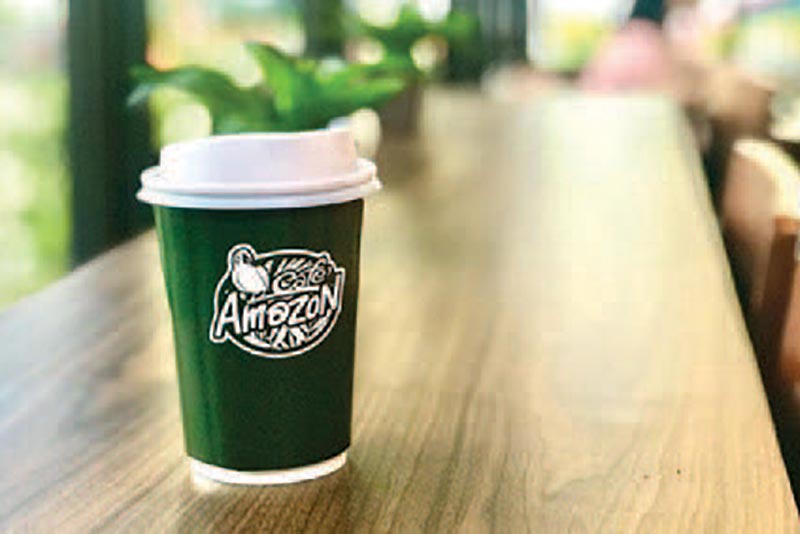
So, what advanced retail capabilities will the fuel retail sector have? Several different models are being considered. A multifunctional approach incorporates multiple convenience offerings in one location — such as food shopping, click and collect, pharmacy purchases and postal services. Multi-brand collaborations see fuel retailers share locations with other brands such as Starbucks, McDonalds, or Subway.
“Different responses and strategies will have to be adopted depending on a number of factors including speed of EV, HEV penetration, zoning and licensing rules around recharging facilities and the design and size of current petrol stations,” comments Eugene Tan, senior advisor of GXS Partners, a consulting company focused on solutions that work in Asia.
“We believe that EV adoption rates will vary across Asia so existing network owners and operators will have to monitor developments closely and develop their own views of possible future scenarios to decide how they can maximise the value of these [retail] sites and align it to future mobility needs. More touch points will have to be developed at sites, and deeper relationships built across the mobility space as the role of oil companies change,” Tan says.
While most of us were hunkering down at home at the height of the pandemic, home deliveries played a key role in maintaining our sanity. Major oil companies have now established innovative food delivery models and partnerships with food delivery platforms. bp Australia’s Couchfood offers home delivery of chips, chocolates and drinks alongside everyday essentials such as milk and bread. In the United Kingdom, Marks & Spencer franchise stores at BP retail stations offer delivery of up to 60 products via online food delivery company Deliveroo. In September, rapid delivery operator, Uber Eats, secured a deal with Shell to add over 340 Shell forecourt grocery stores to its platform. The deal includes products from Little Waitrose, Jamie Oliver Deli, and Budgens. Retail service stations are already reshaping for the future.






